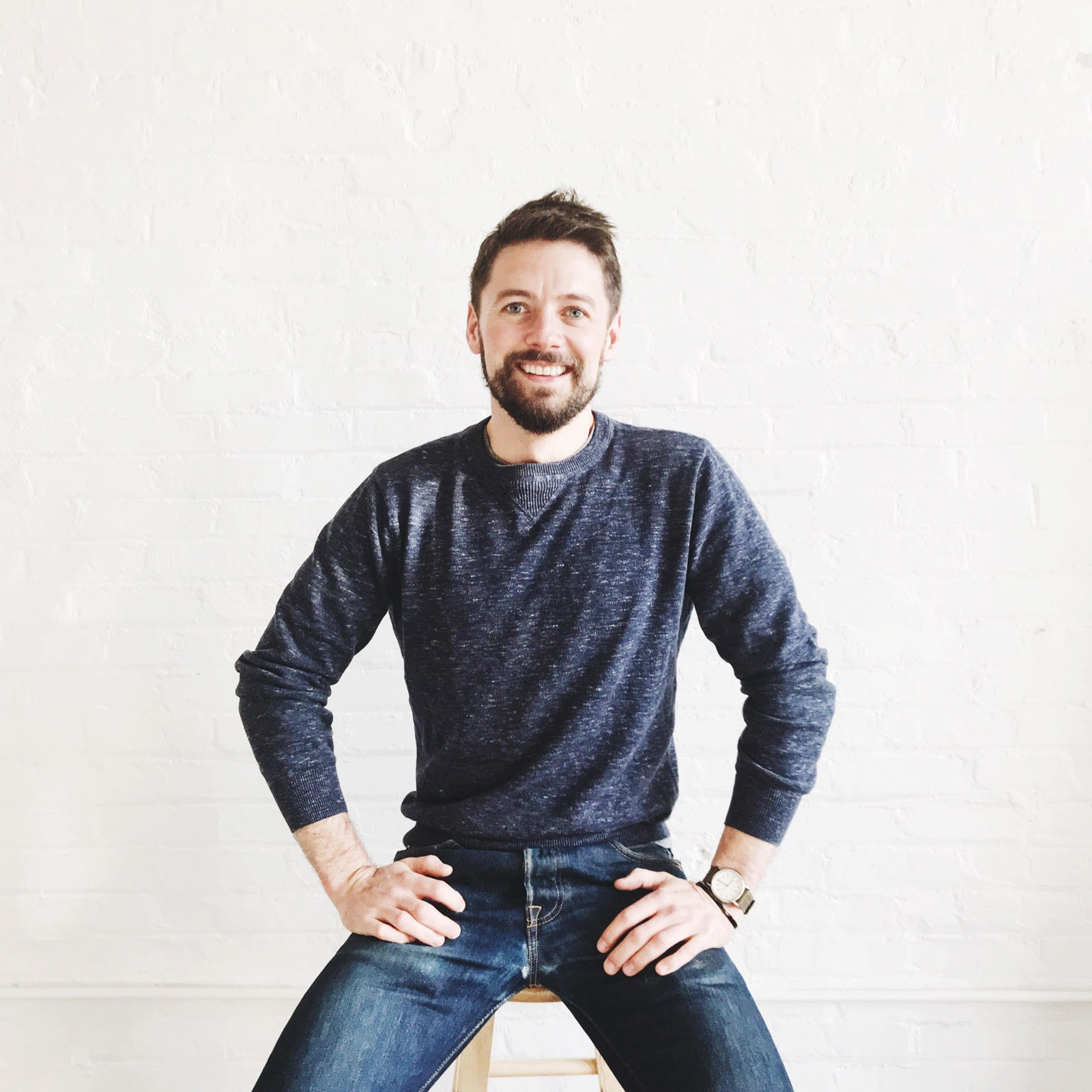
Food+Tech Connect and The Future Market are hosting Biodiversity: The Intersection of Taste & Sustainability, an editorial series featuring interviews with over 45 leading food industry CEOs, executives, farmers, investors and researchers on the role of biodiversity in the food industry. Read all of the interviews here.
Building a supply chain for under utilized crops is complicated. It takes building trust with farmers, distribution infrastructure and consumer demand, all while navigating crop cycles, consistency, cost and fair trade practices. Below, I speak with Casey Emmett, director of strategic sales at Health Warrior (recently acquire by PepsiCo), about how the chia brand built its initial supply chain for the crop, which at the time was under utilized.
___________________
Danielle Gould: Is biodiversity a priority for Health Warrior? If so, how and why?
Casey Emmett: It is. For starters, a more biodiverse food source is the best shot we have at long, happy lives.
Consider your gut: the diversity and balance of organisms in our microbiomes directly affects just about everything about us, including our sleep, our relationships and the diseases we might suffer over the courses of our lives.
Our microbiomes are, of course, directly impacted by what we eat, a decision we get to make several times per day. No pressure! Michael Pollan said it best in In Defense of Food: “You are what you eat eats too,” and we should assume this applies all the way down the food chain.
That is, not only does the quality of our lives depend heavily upon our food, and the quality of our food depend heavily upon its source — the more pristine the water, the mightier and more delicious the fish (and kelp!); the healthier the soil, the more robust the carrot. It is also worth remembering that there is more life below ground than above it, and we consumers have an enormous impact on what happens down there, if only based on what foods we plant (and then eat).
It’s a two-way street: the better we eat, the better the soil; the better the soil, the better we eat. There’s a kaleidoscope of bugs, bacteria, fungi, dirt, water, and other organisms below ground and, like our guts, it seems the more diverse and balanced the better. A healthy soil, among a multitude of benefits, stores carbon and prevents erosion. And as very wise chef Dan Barber wrote in The Third Plate, soil minerals happen to be “the building blocks of human nutrition.”
You are what you eat eats, too. The healthier the soil, the happier the gut, the longer the healthspan.
DG: What is Health Warrior doing or planning to do to promote biodiversity?
CE: We work to put the most nutrient-dense, delicious plants as the primary ingredient in truly good food products. As we grow, so does the opportunity to improve existing products, get even more creative and agile with respect to new ones, and amplify that real food message many times over.
DG: What are the greatest challenges and opportunities Health Warrior faces for creating a more biodiverse system? What are you doing to overcome or capture them?
CE: The agronomic work for under utilized crops takes time to scale. If you sell chia seeds nationwide after they were forgotten for 500 years, it’s a delicate dance between distribution and crop cycles.
For each ingredient we need to be confident in the following, at a minimum:
1. Food Safety
2. Consistent Quality (texture, taste, nutrition)
3. Reasonable Cost
4. Fair Trade Practices
More broadly, from a supply chain and brand perspective, is this a truly good-for-you ingredient that we can build on?
In April 2012, we were busy selling to ten stores out of the back of my Jeep (and my brother Shane’s hallway) when Whole Foods Market asked us to launch our new Chia Bar nationally — in every store in every region – by September.
More experienced companies might have wilted. Thankfully, we had no idea what we were doing! We made our best guess as to inventory requirements for the coming year, and then set about building strong partnerships with great suppliers.
The chia plant, though hardy, traditionally grows within 15 degrees of the equator, i.e. Central America and Australia, and it has a long maturation period (the good stuff is 4-5 months from planting to harvest).
If we were to be in-store in September we’d need to deliver in August, and manufacture in July. Which meant three months to secure enough high-quality chia supply to actually make the bars to launch. Remember: good chia seeds need to 4-5 months to mature. So to begin, we needed to get existing supply on a boat ASAP, and then, if Whole Foods shoppers actually bought the bars — an enormous “if” at the time — grow quite a bit more to last the year.
The growers needed two things to dedicate resources to the emerging trend: 1) a market (a promise to tell the story of chia seeds with a real investment of time & money), and 2) financial commitment. We needed to commit to buy a significant amount of chia seeds
The boom in chia’s popularity coincided with (was caused by?) Health Warrior’s national launch, and the following year, every food company wanted to use chia as an ingredient. There simply was not enough chia to go around. Thankfully, we had already established great partners, both supply chain and financial.
This is a common issue in the industry (see: The Great Oat Milk Shortage of 2018). All those avocados and oat milk have to come from somewhere! And a brand riding or driving an ingredient trend (ala chia) can fall victim to its own success.
Yet another reason we consumers should diversify what we eat: it may give the incredible, unknown ingredient’s supply chain the time it needs to mature.
Today, after years of running the gauntlet, with an enormous amount of help, Health Warrior has thrived, and this is our discipline. We apply it to every product we have, and we’re poised to replicate it with other emerging hero ingredients.
DG: How does Health Warrior define and think about biodiversity? What does an ideal biodiverse food system look like? How do you measure biodiversity, and when will we know when we’ve arrived at a “good” level of biodiversity?
CE: There are about 300,000 edible plant species on earth (FAO estimates vary between 30,000 and 300,000). Our modern food system only utilizes about 200, of which 60 percent are corn, soy, wheat and potato. Among those excluded are some of the most delicious, nutritious and downright interesting foods on earth. We should eat them.
Broadly speaking, we will know we’ve arrived at a “good” level of biodiversity when the major disease factors (75 percent of all disease) that we know to be directly impacted by diet are in decline: heart disease, diabetes and cancer.
We’ll be able to see it, too, when our communities look a little wilder and better integrated with a region’s natural systems. The Billion Oyster Project in New York is one of many good starts toward that end.
DG: What is the business case for products that promote a more biodiverse food system?
CE: A more biodiverse food system provides more interesting and delicious foods, and without it, the food system itself is not viable in the long run.
DG: What investments need to be made to create a more biodiverse food system?
CE: So many! I’m a zealot, of course, but I believe the world we should be working toward is one in which all of our plates at every meal are crowded with absolutely delicious, complete foods, and all innovation and investment should be directed toward that goal.
We can make it easier for farmers to transition to organic (better education, financial support, health and crop insurance). As consumers, we can eat regionally and seasonally, where possible, and our schools, grocery stores and restaurants (even national chains) should serve us thus. We can help consumers discern complete food from not (better marketing). And we can account for all those resources we’ve taken for granted, like the air, forest, water and soil.
DG: Does your average customer care about biodiversity today? Why should they care? How do you (or will you) get them to care?
CE: Our core consumer cares, but we have a long way to go. In a bubble, the following is obvious: the best foods are complete foods like the mighty sweet potato. Simple, versatile and knock-your-socks-off delicious, simply prepared.
For the general public this story has not stuck for a variety of reasons, primary among them consumers do not see in their busy lives many truly good food companies, much less food companies sharing the good news: Complete food is not only the more delicious, satisfying, longterm investment, working to prevent all the major disease factors hobbling we humans today. It is also an everyday performance advantage. Good food leaves us cleaner, lighter, stronger today.
DG: What are some of the most important things retailers, food manufacturers and other key parts of the food supply chain can do to support biodiversity?
CE: As an industry we should encourage the consumption of a greater diversity of plant species, plain and simple. If only we merchandise nutrient-dense whole foods — mostly plants — over heavily processed food, the world will change for the better.
DG: Are there certain products you would like to see more of in the food industry that would help promote a more biodiverse agricultural system?
CE: More legumes and fermented veggies, please!
DG: What is your vision for what a more biodiverse food system looks like in 10-15 years?
CE: A truly biodiverse food system requires a more diverse workforce in every region at every level, from farmers to chefs to CEOs, so I would love to see more women and people of color in the industry; many more plants; better access to markets for farmers; safe, beautiful, and fully compostable packaging for all products; restored soil, forests, and waterways in every region of the United States; and generally, a greater variety and availability of complete foods that are good for the entire chain, from the soil (or ocean) to the gut.
DG: Anything else you want to share?
CE: Recommended reading:
- “Lentil Underground,” Liz Carlisle
- “The Third Plate,” Dan Barber
- “American Catch,” Paul Greenberg
- “The Race of our Lives Revisited,” Jeremy Grantham, Aug 2018
- “The Sustainable Economy,” by Yvon Chouinard, Jib Ellison, and Rick Ridgeway, HBR, October 2011
- “The Omnivore’s Dilemma,” Michael Pollan
Read all of our biodiversity interviews here and learn more about Biodiversity at The Future Market.
____________________________
 Casey Emmett, Director of Strategic Sales for Health Warrior
Casey Emmett, Director of Strategic Sales for Health Warrior
Casey Emmett is Director of Strategic Sales for Health Warrior, helping retailers at all levels invest in truly good packaged food.
Casey has built his career on the notion that we can do better by ourselves and our communities on a lot of fronts. He had the honor to work on Barack Obama’s first presidential campaign, helped to organize a stem cell research conference, and coordinated (among many other good people) relief for the famine in Somalia in 2011. For the past 8 years he’s worked to build Health Warrior from scratch.
Casey holds a BA in Religious Studies from Colgate University.





